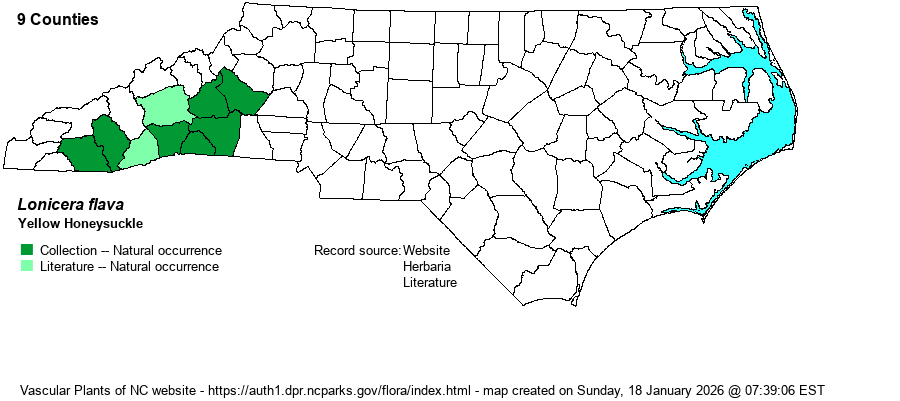| Author | Sims | |
| Distribution | Present over much of the southern half of the Mountains and southwestern Piedmont foothills, ranging northeast to Burke County. Not present in the northern Mountains or east of the foothills/monadnocks.
This is a somewhat Southern species of low to medium height mountains, ranging from western NC to central OK. It does not extend farther south, however, than central GA and central AL.
| |
| Abundance | Rare to uncommon in its rather restricted range and habitat. Seems to be present on most of the suitable mountains and outcrops where the proper soil and rock types are present. This is a Watch List species in NC; it formerly was considered as Signficantly Rare by the NC NHP. | |
| Habitat | This species is restricted to rocky areas over high pH soils. Even though most populations occur at the margins of granitic domes (which are felsic rocks and weather to acidic soils), there are typically mafic minerals within the rock formations. Some sites are at rocky outcrops where the rocks are not granitic but are otherwise mafic (such as amphibolite). At any rate, the species grows on thin soil at the margins of rock outcrops and domes. | |
| Phenology | Blooms in April and May; fruits in July and August. | |
| Identification | This is a woody deciduous vine that sprawls over low shrubs, saplings, and herbs and reaches to about 8-10 feet long. The opposite leaves are like most other honeysuckles, being ovate with rounded tips, entire, and to about 2.5 inches long. They are gray-green below, which distinguishes them from most others in the genus. However, the flowers will clinch the identification, as they are a bright golden-orange to yellow-orange, growing in a cluster within a fused cup of leaves at the ends of branches. When in bloom, this vine is bound to attract your attention, especially as there are so few native woody species in the state with flowers that have an orange color or tinge. | |
| Taxonomic Comments | None
| |
| Other Common Name(s) | None | |
| State Rank | S3 | |
| Global Rank | G5? | |
| State Status | W1 | |
| US Status | | |
| USACE-agcp | | |
| USACE-emp | | |

